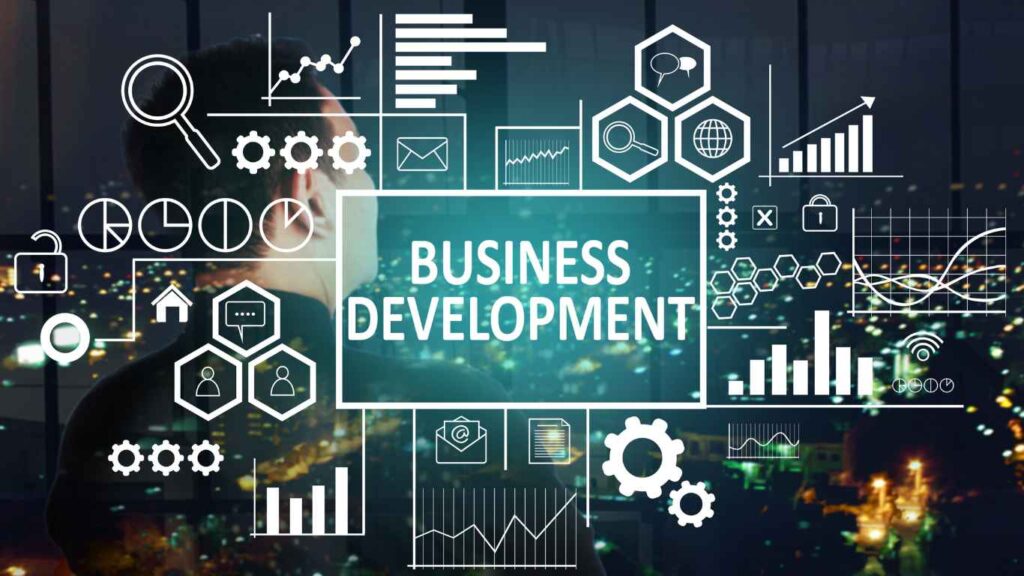Product management is a crucial aspect of any successful business, as it involves the planning, development, and launch of products that meet the needs and desires of customers. However, this process does not end with the release of a product into the market. In fact, there are several stages that make up the product management life cycle, from ideation to retirement. Understanding this cycle is essential for any product manager looking to effectively bring new products to market and ensure their continued success.
In this blog post, we will demystify the product management life cycle and explore each stage in detail.
Tabel Of Content
- The Concept of the Product Management Life Cycle
- Stage One – Ideation: The Birthplace of Ideas
- Stage Two – Development: Turning Ideas into Reality
- Stage Three – Launch: The Big Reveal
- Stage Four – Retirement: The End of the Road
- The Role of the Product Manager in the Life Cycle
The Concept of the Product Management Life Cycle

Think of the product management life cycle as a roadmap guiding a product’s journey from its inception to its eventual retirement. It’s a carefully strategized sequence of stages that product teams use to shape the trajectory of a product. Each stage in the life cycle offers a unique perspective, focusing on different aspects such as innovation, development, launch, and eventually, retirement.
The purpose of this life cycle isn’t just about creating a product. It’s about creating a product that resonates with the market and provides value to customers while contributing positively to the company’s bottom line. It provides a structured pathway to navigate the complex landscape of product management, ensuring every critical aspect of the product’s evolution is given due attention.
At its core, the product management life cycle is about effectively managing change and steering a product’s direction to meet the shifting needs of the customers and the market. By adhering to this cycle, product managers can ensure they’re always a step ahead, ready to adapt and respond to whatever challenges and opportunities the product might encounter on its journey.
From the exhilaration of ideation to the practicalities of development, the anticipation of the launch, and the thoughtful planning of retirement, the product management life cycle embraces the entire product journey.
Stage One – Ideation: The Birthplace of Ideas
The ideation phase is where the product’s journey truly begins. At this stage, the focus is on harnessing creativity and encouraging innovation to explore potential product concepts. Teams tap into their collective knowledge and insights, leveraging brainstorming sessions, and customer insights to generate a broad spectrum of product ideas. The emphasis here isn’t on refinement or feasibility, but on uncovering diverse possibilities and considering new perspectives.
The magic of ideation lies in its open-ended nature. There are no wrong answers or bad ideas – the goal is to generate as many product concepts as possible. It’s a collaborative process that values diverse perspectives, welcoming inputs from all team members regardless of their role or seniority.
Customer feedback plays a vital role in this stage, providing invaluable insights about their needs, preferences, and pain points. This helps ensure that the product concepts developed are not only innovative but also relevant and valuable to the target audience.
In addition to internal brainstorming and customer feedback, ideation also involves extensive market research. Teams delve into the competitive landscape, technological trends, and industry shifts to identify potential opportunities and gaps that a new product could fill.
The result of this stage isn’t a fully formed product, but rather a promising idea. An idea that has the potential to solve a real problem, fulfill a market need, and ultimately, bring value to customers and the company. This idea then becomes the cornerstone for the next stage of the product management life cycle: development.
Stage Two – Development: Turning Ideas into Reality
Once the ideation stage has concluded with a promising product idea, the exciting phase of development commences. This is where that compelling concept starts to evolve into a tangible product. Imagine it as a sculpture, where the idea is the lump of clay and the development process shapes, refines, and perfects that lump into a unique masterpiece.
At this stage, the teams transform the abstract concept into a concrete plan. This involves a multi-faceted process where various teams come together and play crucial roles. Designers sketch the product, engineers brainstorm and build the technology behind it, and marketers start strategizing on how to present it to the world. It’s a flurry of activity, where each person’s expertise contributes to the final product.
Drafting product specifications is one of the key activities at this stage. These detailed descriptions outline what the product should do and how it should work, providing a clear direction for the design and engineering teams. Next, it’s time for prototyping. This step is vital as it allows the team to create a scaled-down version of the product. The prototype is then tested, scrutinized, and reworked until it achieves the desired functionality and quality.
The development stage is also a time of rigorous testing. It’s here where any issues are identified and resolved. The product is put through various scenarios to ensure it works as intended and meets all defined specifications. This testing is not a one-time event, but rather a continuous process, as the teams strive for perfection.
It’s important to note that the development stage is not just about building a product that works, but also about creating a product that resonates with the target audience. Hence, customer feedback and market insights gathered during the ideation stage are invaluable at this point, helping to align the product’s features and design with the customers’ needs and expectations.
At the end of this stage, what was once a promising idea is now a product ready to be introduced to the world. With the final prototype in hand, the product team prepares to launch their masterpiece into the market. The stage is set for the next exciting phase of the product management life cycle: the launch.
Stage Three – Launch: The Big Reveal
Now that the product is polished and ready, it’s time to take center stage with the highly anticipated product launch. This stage is not merely about the release of a new product, but it’s the moment when the hard work behind the scenes finally comes to fruition. It’s a stage filled with anticipation, excitement, and of course, a little bit of anxiety.
During the launch phase, the product takes its first steps into the marketplace, ready to make its mark. However, launching a product isn’t as simple as flipping a switch. It involves intricate planning, strategic marketing, and impeccable timing.
Collaboration is key at this stage. The product managers join forces with marketing and sales teams to strategize an effective launch plan. Together, they devise the best way to unveil the product to its audience, creating a buzz that resonates across the market. This stage requires a keen understanding of the target audience, the value the product provides, and the unique selling proposition it offers.
Crafting a compelling product message is a crucial part of this stage. This message should communicate the product’s value proposition in a clear and captivating manner, highlighting how it stands out from its competitors. It’s about distilling the essence of the product into a narrative that resonates with the target audience and sparks their curiosity.
Choosing the right distribution channels is also paramount. Whether it’s online stores, retail outlets, direct sales, or a combination of these, the product needs to be where its target customers are most likely to find it. Accessibility and visibility are crucial to a successful launch.
The launch stage is not just about the initial release but also about maintaining momentum. This involves ongoing marketing efforts and promotional activities that continue to generate awareness and engagement around the product. It’s about creating a memorable first impression that continues to resonate long after the initial release.
Overall, the launch stage is the culmination of all the planning, development, and strategizing. It’s the moment when the product steps into the limelight, ready to connect with customers and start making a difference. It’s the exciting phase where the product story unfolds and the audience becomes part of it. The product is now live and it’s time for the next chapter in the product management life cycle.
Stage Four – Retirement: The End of the Road
In the grand cycle of product management, even the most successful products eventually reach a point where they are ready to bow out. This final act in the product’s journey, often referred to as the retirement stage, is no less critical than the preceding phases. It’s a stage characterized by careful strategic planning, an empathetic approach to customer communication, and a graceful exit from the market.
Retirement can be triggered by various factors. For some products, it’s the emergence of superior technology that makes them obsolete. For others, it’s the evolving needs and preferences of the market that signal their time is up. In some instances, the retirement decision comes down to simple economics – when the product’s maintenance costs outweigh its returns.
Just because a product is retiring doesn’t mean it’s forgotten. On the contrary, managing a product’s retirement involves several thoughtful decisions. Perhaps one of the most critical considerations is how to communicate the retirement to customers. This isn’t merely an announcement – it’s about ensuring customers feel valued and supported, despite their favorite product bidding farewell.
To make this transition as smooth as possible, product managers may propose alternatives or upgrades to customers, so they are not left in a lurch when the product is phased out. This could mean directing customers to another product in the portfolio that offers similar functionality, or even developing a new version of the retiring product.
Moreover, the retirement phase may also include a period of continued customer support. This is to ensure customers still using the product have access to necessary assistance until they transition to a new solution. Such a step underscores the company’s commitment to its customers, further strengthening their loyalty and trust.
Sometimes, a product retirement might even call for a celebration. Hosting a ‘farewell event’ for a well-loved product can stir nostalgia among customers and provide an opportunity for the brand to reinforce its relationship with them.
In essence, product retirement is not a sudden halt, but a carefully planned process, designed to ensure a product’s end of life is as successful as its inception and growth. It’s about bidding a respectful goodbye while looking forward to the new opportunities that lie ahead.
The Role of the Product Manager in the Life Cycle

The baton of the product management life cycle is held firmly in the hands of the product manager. They are the linchpin that connects each stage, ensuring the transition is smooth and consistent with the company’s objectives. From sparking the flame of creativity during ideation and meticulously supervising product development, to masterminding the launch strategy and managing the retirement protocol, the product manager’s role is vital in navigating the product’s life cycle towards triumph.
Indeed, the product manager is like the conductor of an orchestra, harmonizing different instruments (or stages) to create a symphony of success. During the ideation stage, they ignite the creative process, fostering an environment that encourages innovation and divergent thinking. They ensure that all voices are heard, regardless of roles or hierarchy, championing a culture of inclusivity and collaboration.
When the baton moves to the development phase, the product manager meticulously oversees the transformation of the product idea into a physical entity. They liaise with different teams – from design to engineering, ensuring each contributes to sculpting the product according to the envisioned concept.
As the product prepares for its big reveal, the product manager crafts the perfect launch strategy. In collaboration with marketing and sales teams, they weave a compelling narrative around the product, devise the distribution channels, and orchestrate promotional activities that not only create an unforgettable first impression but also sustain momentum post-launch.
Lastly, when it’s time for the product to take its final bow, the product manager leads the retirement protocol. They are entrusted with the delicate task of communicating the retirement news to customers in a way that preserves trust and goodwill. They also ensure a smooth transition for customers to alternative solutions and even lead the charge in planning a heartfelt farewell event for the product.
In essence, the product manager is not just a manager but a maestro, skillfully directing each stage of the product’s life cycle. They play an instrumental role in shaping the product’s journey, turning the vision into reality, and ultimately, orchestrating a successful performance from ideation to retirement.




